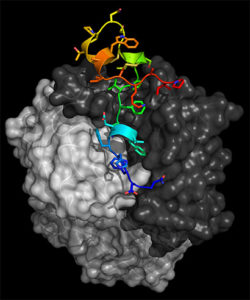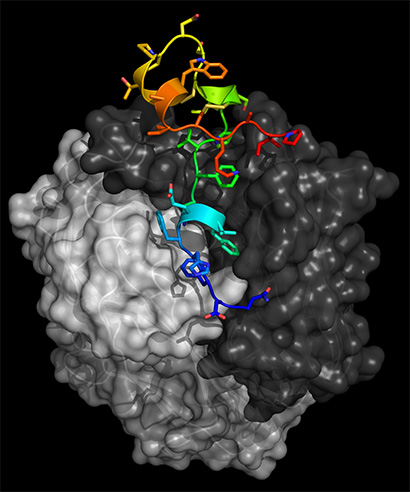
A protective human antibody (dark and light grey surface) sticks to a folded part of the RSV G protein antigen (rainbow colored blue-to-red). Credit: Rebecca DuBois
Using diffraction data collected at cryogenic temperature at the Advanced Light Source (ALS) Beamline 8.3.1, University of California Santa Cruz (UCSC) scientists, led by assistant professor of biomolecular engineering Rebecca DuBois, determined the three-dimensional atomic structure of a major surface protein of the respiratory syncytial virus (RSV): RSV G. Medical researchers have been trying to develop a vaccine for RSV, which causes serious respiratory disease in infants and older adults, for more than 50 years without success. But by leveraging the work of collaborators at Trellis Bioscience, who isolated protective human antibodies targeting RSV G, an attachment protein that allows the virus to stick to lung cells, the UCSC scientists were able to show that these protective antibodies target a section of the protein called the central conserved domain that is the same in all strains of the virus. The findings, published March 9 in Science Immunology, point to a promising route for designing a vaccine effective against a broad range of RSV strains. Read more from the UC Santa Cruz News Center.




